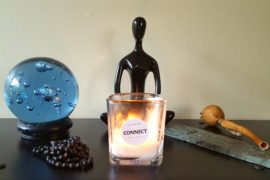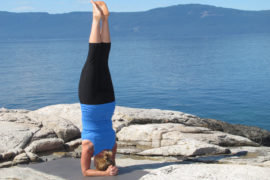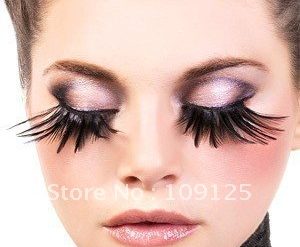There has been a lot of talk lately about breathing. I swear if one more person tells me to “Just Breathe” or “Take a big deep breath” or “Breathe through the posture” I am going to explode, because what I want to scream is, “I am breathing, duh! I have been practicing yoga for 18 years, I breathe! I am alive so therefore I must be breathing!” But this constant talk about breathing got me thinking that maybe I am not breathing enough or perhaps I am breathing incorrectly. So I decided to do some research on how to breathe. What I found kind of blew my mind.
So here are the breathing basics:
The definition of breathing according to the Urban Dictionary is: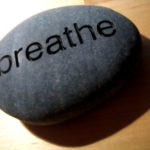
- inhale.. exhale
- Over-rated
- Comment: Not-breathing, it’s what all the cool kids do.
Now, when I read this I laughed because it made me wonder if breathing is actually overrated. Well, it isn’t and I wish the “inhale” and “exhale” was that simple.
The benefits of breathing are obvious – it keeps us alive. Our breathing is controlled by our autonomic nervous system. The sympathetic component controls the delivery of oxygen and nutrients to virtually every organ, including the brain and every structure of the musculoskeletal system. The parasympathetic nervous system balances the delivery of oxygen and nutrients. So . . . what is the issue? If breathing is automatic, what is the big deal?
The dealio is that even though breathing is automatic, it is surprising how much we don’t breathe. Most people’s breathing patterns are anything but smooth and fluid. (If you have ever slept next to a guy who snores you will understand this, hell, snorers stop breathing all the time). The average person’s breathing tends to tense, shallow, and erratic. When we are afraid or hear bad news, we often gasp—inhaling and then holding the breath. These breathing patterns can activate the sympathetic nervous system, or as it is often referred to, the “fight or flight response.” When the parasympathetic nervous system is out of balance it can overwhelm the system with an overabundance of energy causing dizziness, disorientation, confusion, fear, anxiety or other forms of hyper arousal and distress. That is why when you practice a breathing technique (like pranayama in yoga) that fosters a long smooth exhale it supports the parasympathetic nervous system and activates what is commonly known as the “relaxation response,” reducing stress and its effects on your body and mind. This in turn will reduce anxiety, promote restful sleep, ease pain, increase attention and focus, plus a whole other list of health benefits.
So how do you breathe? In yoga, pranayama is considered the art of breathing; there are four basic types of pranayama that are widely practiced:
- Ujjayi pranayama:
 My personal favourite, the ujjayi breath is also known as Darth Vadar. It is used in Ashtanga and many Vinyasa classes because it is one of the only pranayama techniques that is practiced simultaneously with asanas (postures.) It goes like this: in and out through your nose, but on each exhale, you should attempt to make the sound of a rumble or waves in the back of your throat, kind of like Darth Vadar. This is a breath that is both relaxed and energized, allowing for balance.
My personal favourite, the ujjayi breath is also known as Darth Vadar. It is used in Ashtanga and many Vinyasa classes because it is one of the only pranayama techniques that is practiced simultaneously with asanas (postures.) It goes like this: in and out through your nose, but on each exhale, you should attempt to make the sound of a rumble or waves in the back of your throat, kind of like Darth Vadar. This is a breath that is both relaxed and energized, allowing for balance.
- Kapalabhati pranayama: a.k.a Breath of Fire, this is the funky one that you do with your nose and belly. It is also the basis of Kundalini yoga. You start with a deep inhale and forcefully exhale — drawing all the air out of your belly. After your next full inhale, begin to exhale forcefully out through your nose 15 to 30 times quickly without taking inhaling. Actively draw your belly in with each percussive exhale. Rest for a few breaths and repeat 3-4 times. This one is to make your skull shine… or bring oxygen to your head.
- Nadhi sodahana pranayama: a.k.a alternative nostril breathing — I like this one when I am feeling congested and want to start a kick-ass practice because it blows open your lungs. It goes like this: use a hitchhiker hand (all your fingers in a clenched fist, except for your thumb sticking out), and use your thumb to close the right side of your nose. Inhale deeply through the left nostril and hold your breath. Close your left nostril and exhale through the right. In the same pattern, breathe in deeply through your right nostril and hold. Then close the right nostril and exhale through the left. Repeat 15 to 20 times.
- Sithali pranayama: This one is for when you think you’re going to pass out during hot yoga. Curl up your tongue into a tube-like passage. Inhale through your mouth (keeping your tongue just like this!), then close your mouth and hold your breath for five to 10 seconds. Exhale slowly through your nose. Repeat 15 to 20 times — or whenever you feel sufficiently cooled off!
After the first 15 min of the class I realized that what Robin was speaking of, the breath and how it works in the body, completely resonated with me and it was the understanding that I had been looking for. The basic principle is that our bodies have an incredible intelligence and the ability to repair and heal themselves (this concept I have believed for many years). Through the breath we can raise the vibrational level of our bodies which allows for healing and renewal. The class was an amazing experience, to just set my intention to focus on my breath and have if flow effortlessly, but equally. Not a larger inhale than exhale or vice versa, just simply allowing my exhale to be in equal balance to my inhale, like a wave in the ocean. The practice opens the diaphragm, which is 70 per cent of the respiratory system. The diaphragm will contract and relax naturally on its own without the use of any other muscles, in turn activating and cleansing the whole body from roots to crown.
What I truly loved about this concept is that everyone can do it, no matter your physical age, limitations or lifestyle. It can be practiced anywhere and anytime. It can be five minutes, 20 minutes or as long as you want. So, really there is no excuse. What I found is that I was already doing something similar in my morning meditation but this gave me more tools in which to modify my breathing and be more aware of what I was actually doing. After a week of using the breath wave during my meditation, I have noticed so many positive changes in not only my body, but my mental clarity and I just feel lighter and happier! Woo hoo!
My Conclusion
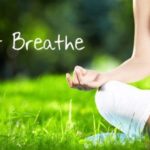 Why is it that the simple things that are right in front of us, that make us feel good are the ones that we ignore? Breathing is kinda like having an orgasm (see other blog) it is an amazing bodily function that makes us feel great but we totally take it for granted. Think about it, we breathe 5,000 to 30,000 times a day, two to five million times in your lifetime. Anything you do that much is going to influence your life in a positive or negative way. Plus, we can live without a lot of things in this life but we cannot live without our breath. So don’t “just breathe” or “take a deep breath” or “breathe through the posture.” Actually step it up and give some conscious thought to how you breathe. Then learn how to do it properly and then . . . god help you . . . commit to practicing! If you can commit to yoga, your job, your family, eating healthy or a sport, then you can commit to practicing your breathing because it is your life energy and when done with intention and awareness it will not only transform your body but also your life for the better. And that is seriously a Woo hoo!
Why is it that the simple things that are right in front of us, that make us feel good are the ones that we ignore? Breathing is kinda like having an orgasm (see other blog) it is an amazing bodily function that makes us feel great but we totally take it for granted. Think about it, we breathe 5,000 to 30,000 times a day, two to five million times in your lifetime. Anything you do that much is going to influence your life in a positive or negative way. Plus, we can live without a lot of things in this life but we cannot live without our breath. So don’t “just breathe” or “take a deep breath” or “breathe through the posture.” Actually step it up and give some conscious thought to how you breathe. Then learn how to do it properly and then . . . god help you . . . commit to practicing! If you can commit to yoga, your job, your family, eating healthy or a sport, then you can commit to practicing your breathing because it is your life energy and when done with intention and awareness it will not only transform your body but also your life for the better. And that is seriously a Woo hoo!
Cheers,
Marjie Martini

